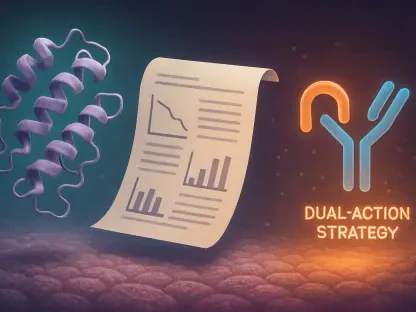Endometriosis is a condition characterized by the abnormal growth of endometrium-like tissue outside of the uterus. These growths, which often attach to pelvic organs such as the ovaries, fallopian tubes, bladder, and intestines, undergo the same cycle of thickening, breaking down, and bleeding as the endometrial tissue within the uterus. This process causes a range of symptoms, including local inflammation, pelvic pain, congestive dysmenorrhea, excessive menstrual bleeding, and pain during intercourse. The nature of these symptoms significantly impacts the quality of life for many women.
Approximately 176 million women worldwide are estimated to be living with endometriosis, a figure representing 5-10% of women of reproductive age. In the United States alone, about 11% of women, particularly those between the ages of 30 and 40, are affected by this condition. The prevalence of endometriosis is notably higher among women experiencing infertility, with 47% of such cases also diagnosed with the condition. While much attention is given to the painful and often debilitating symptoms of endometriosis, there is growing interest in understanding its broader implications on women’s health, especially concerning chronic diseases.
Endometriosis and Chronic Diseases
Endometriosis is not only debilitating due to its symptoms but also increases the risk of several chronic diseases. Hypertension, atherosclerosis, coronary heart disease (CHD), dyslipidemia, autoimmune diseases, and various gynecological cancers are among the conditions that have been linked to endometriosis. The study published in BMC Public Health aims to delve deeper into the relationship between endometriosis and cardiovascular disease (CVD) risk, offering new insights into the potential health consequences faced by women with this condition.
The chronic systemic inflammation, oxidative stress, and elevated lipid levels commonly observed in endometriosis patients contribute significantly to the development of atherosclerosis. This, in turn, increases the risk of coronary artery disease (CAD), hypertension, high cholesterol, and diabetes. As a result, the progression of coronary artery atherosclerosis emerges as a major health concern for women with endometriosis. The study’s findings suggest that endometriosis may indeed play a more substantial role in the development of CVDs than was previously understood.
Previous Research and Findings
Previous research has confirmed a higher relative risk for endometriosis patients developing hypertension, hypercholesterolemia, ischemic heart disease (IHD), and myocardial infarction (MI) by 14%, 25%, 40%, and 52%, respectively. Despite these significant observations, there has been a lack of a definitive understanding of the positive association between endometriosis and CVDs. This gap in knowledge has made it challenging for healthcare providers to manage the heightened risks effectively in endometriosis patients.
To address these uncertainties, the current study conducted a systematic review and meta-analysis of studies published between January 2000 and April 2023. By meticulously examining six cohort studies that met the inclusion criteria, the findings reveal a 23% increased risk of developing CVD and a 13% increased risk of hypertension among women with endometriosis compared to those without the condition. These insights, though significant, highlight the need for cautious interpretation and further research to confirm these associations and understand the underlying mechanisms.
Biological Mechanisms and Lifestyle Factors
Several biological mechanisms may be involved in the heightened CVD risk in endometriosis patients, including chronic inflammation, oxidative stress, and increased estrogen activity. Elevated estrogen levels can adversely affect various aspects of the cardiovascular system, such as altering endothelial function, increasing arterial stiffness, and promoting the formation of atherosclerotic plaques. These factors collectively contribute to a higher risk of developing CVDs. The interaction between endometriosis and these biological mechanisms underscores the complex nature of the condition and its broader impact on women’s health.
In addition to biological factors, lifestyle choices also significantly contribute to the development of both endometriosis and CVDs. Sedentary lifestyles, poor diet quality, alcohol consumption, and smoking are common risk factors that link these two conditions. Furthermore, genetic characteristics play a role, as previous European studies have identified several independent genetic loci associated with both endometriosis and the occurrence of CVDs. Understanding these interconnected pathways is crucial for developing comprehensive management strategies for patients.
Implications for Healthcare Providers
The study underscores the importance of addressing both the symptoms and broader health implications of endometriosis. Healthcare providers need to be aware of the increased cardiovascular risks associated with endometriosis to develop holistic treatment plans. These plans should include regular monitoring for cardiovascular disease risk factors and the implementation of lifestyle interventions to manage these risks effectively. Such comprehensive care is essential for improving the overall health and quality of life for women living with endometriosis.









